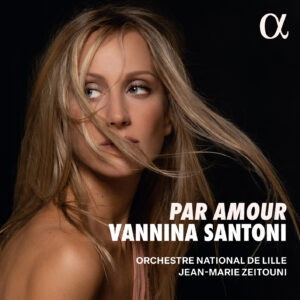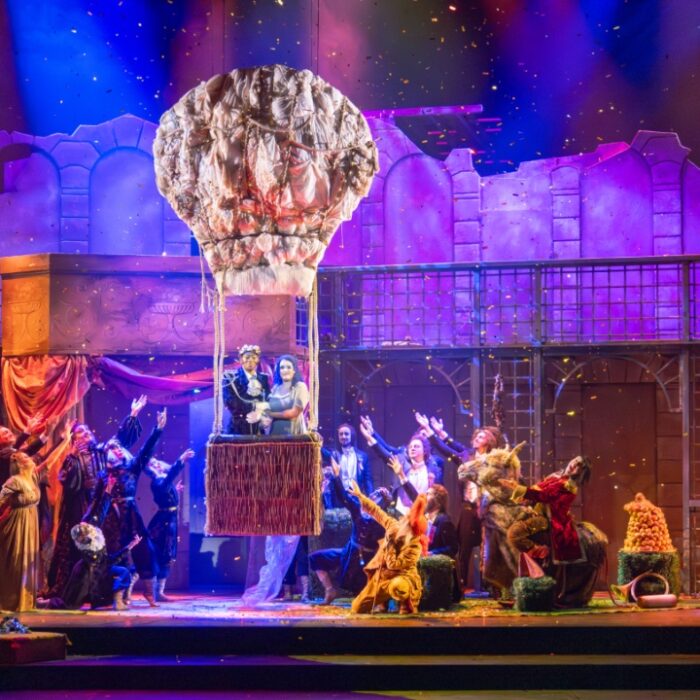
CD Review: Vannina Santoni’s ‘Par amour’
By Bob Dieschburg“Par amour” is a revelatory publication. Novel, crafty, and utterly delightful, it puts in the spotlight Vannina Santoni, a French soprano of yet modest clout – but a formidable sensibility.
Her program, on Alpha Classics, is an operatic potpourri. It transitions from your regular femme fatale to varying shades of amorous innocence: Thaïs and Manon appear alongside Juliette; Katiusha counterpoints the cunning of Lauretta; and Desdemona, despite herself, stands like a self-sacrifice to marital devotion.
Poetic Ingenuity
The arias are, on average, some 15 to 20 seconds slower than usual; and were it not for the principal singer, one would think of maestro Zeitouni’s leisurely pacing as the prerequisite to a renewed attempt at the “without words” format. His hold on the Orchestre national de Lille is symphonic in nature, but dashed with speckles of poetic ingenuity.
Zeitouni particularly works on a prismatic display of color. The strings, in “O mio babbino caro,” have rarely shone more warmly; while in the bedchamber-scene from “Otello,” their candle-like flicker carries an overflowing sense of dread and situational moribundity. Yet for all his evocativeness, Zeitouni shies away from bombast. Instead, he keeps the orchestra hushed, and even as brightly scored a piece as “Giunge il treno” sounds as if composed for a chamber music setting.
Intimate “Par amour”
Enters Vannina Santoni; whose plush tone the languid tempi put under an ever so macroscopic lens. The timbre is somewhat unusual. It has a slightly dramatic edge, though at the base I believe the voice to be a lyric soprano. It is richly layered, and consistent through all registers, including the chest voice which sonically reminds one of Margaret Price. Like Price, Santoni would do well in the Lied repertory, and the same kind of intimacy transpires on “Par amour.”
As such, her technical palette is comprehensive: she seconds the instrumental line, and replicates its color by imbuing vocal gestures with varying degrees of chroma. In “Ah! Je veux vivre,” her runs sparkle with endless nuance; and her Manon appears less ferocious thanks to delicately sustained mezza voces and Santoni’s uncanny ability to psychologize.
Yet her interpretations come naturally. There are no second thoughts, or – for that matter – tendencies to overact. Anna, from Puccini’s “Le Villi,” is as immaculately naive as Katiusha, from Alfano’s “Risurrezione,” is overwrought with despair. In “Giunge il treno” Santoni adds a sympathetic flicker to her voice. For her Desdemona, she does the same, as a physiological tribute, so to speak, to the personage’s anguish.
Not everything is absolutely perfect; but it would be nitpicky, if not spiteful to hold against the brilliance of Santoni’s display a rather trivial set of cosmetic flaws, few and far between. One may, for instance, object that “nuziale,” in “Era più calmo,” was not incorporated into a sweeping legato, or that in the cantilena, her breathing tends to be overemphasised.
Yet in the end, it does not matter, and between the Saint-Sulpice duet from “Manon,” with Julien Dran, and the lullaby of “O ciucciarella” (an encore of sorts), “Par amour” easily ranks among the best recital debuts in years. It is a treasure trove to come back to time and again.


